

BENALLA RURAL CLIMATE AND ENVIRONMENT STRATEGY



Acknowledgement of Country
We acknowledge the traditional custodians of the land. We pay our respects to their Elders past and present and to Elders from any other communities.
Message from the Mayor
I am pleased to present Benalla Rural City Council's first Climate and Environment Strategy 2024-2029 a pivotal document that charts our course towards a more sustainable and resilient future. This strategy is a testament to our commitment to environmental stewardship.
The Council takes pride in our commitment to achieving net zero for corporate operations, enhancing biodiversity, and progressing towards a circular economy. Furthermore, our dedication to developing a water-sensitive community, fostering sustainability, and promoting inclusion reflects our collective vision for a resilient and harmonious community.
As part of our commitment, to deliver this strategy the Council will actively participate in regional partnerships, networks, committees, and groups focused on vegetation planning, land and biodiversity and community engagement.
I express my gratitude to the community members and stakeholders who have contributed their insights and feedback in shaping this Strategy. Your involvement has been invaluable and we are confident resilient, and inclusive Benalla Rural City.
Let us embark on this future, hand in hand.
Executive Summary
The Benalla Rural City 2029 is a comprehensive strategy designed to address the environmental challenges and opportunities the area will face in the coming decades.
This Strategy was developed in consultation with the community of Benalla, agencies, stakeholders, and Council staff. The strategy is guided by extensive community consultation and feedback and aims Plan, including the UN’s Sustainable Development Goals and the wider goals of sustainability and climate resilience.

The first section of this Strategy details Benalla Rural City’s environmental context, internal and strategic context, briefly discusses climate change in Victoria and the region specific to Benalla. It then identifies six key focus areas and delves deeper into Council’s vision and commitment to each: achieving net zero for corporate operations, increasing biodiversity across the municipality, advancing towards a circular economy, developing a water-sensitive community, fostering a sustainable community, and promoting inclusion with the local Aboriginal Advisory Group. These focus areas were chosen as the most impactful and pressing issues by the community.
This strategy aims at achieving our community vision which is to: regenerate biodiversity in natural environment and green spaces, reach zero carbon emissions, create a circular economy, have an active and sustainable transport network, support sustainable food systems and have water sensitive places and communities. It sets a clear direction for the next five years, aiming to make Benalla Rural City a more resilient, sustainable, and inclusive community.
Introduction to the Strategy
This Climate and Environment Strategy (the Strategy) has been developed by Benalla Rural City Council (BRCC) as part of our role in protecting our environment and safeguarding its ability to support our community into the future.
To achieve this goal, the Strategy outlines a proactive and strategic approach to environmental matters and identifies priorities for management. In adopting this Climate and Environment Strategy, Council aims to respond to environmental concerns held by the community.
BRCC is involved in a number of regional partnerships, networks, committees and groups that aim to address environmental issues, responsibilities, deliver projects and meet environmental objectives that require a collaborative approach.
These groups focus on vegetation planning and retention controls, land and biodiversity planning, roadside and waterway management, training, education and skills development, and community engagement.
The many achievements approach fostered within our region. Involvement in these groups has given the Council the opportunity to undertake activities that otherwise may not have been possible.
The Climate and Environment document, that identifies a number of we plan to undertake over the next five years to meet the objectives of the Council Plan.
The Strategy has been community members and various stakeholders throughout the municipality.

About Benalla Rural City Council
Benalla Rural City is located in north-eastern Victoria, 193 kilometres north-east of the Melbourne CBD, and is centred in the Broken River valley. The population according to the latest Australian Bureau of Statistics (ABS) data from the 2021 census is 14,528, with approximately 9,000 living in urban areas and the remaining in and around the Benalla town.1 The total land area is 2,352 square kilometres.
Benalla Rural City was established as an agricultural and pastoral district in the 1840s. The rural area was characterised by wheat, oats and potato growing, alongside some vineyards and mining. It was proclaimed a city in 1965 and Lake Benalla was artificially created in 1973.
The communities south of the freeway that makeup the LGA include those South, Glenrowan West, Lima, Lima South, Lurg, Molyullah, Moorngag, Samaria, Swanpool, Upper Lurg, Upper Ryan’s Creek, Warrenbayne and Winton. The communities north of the freeway include Boweya, Boxwood, Broken Creek, Bungeet, Goomalibee, Goorambat, and Thoona.
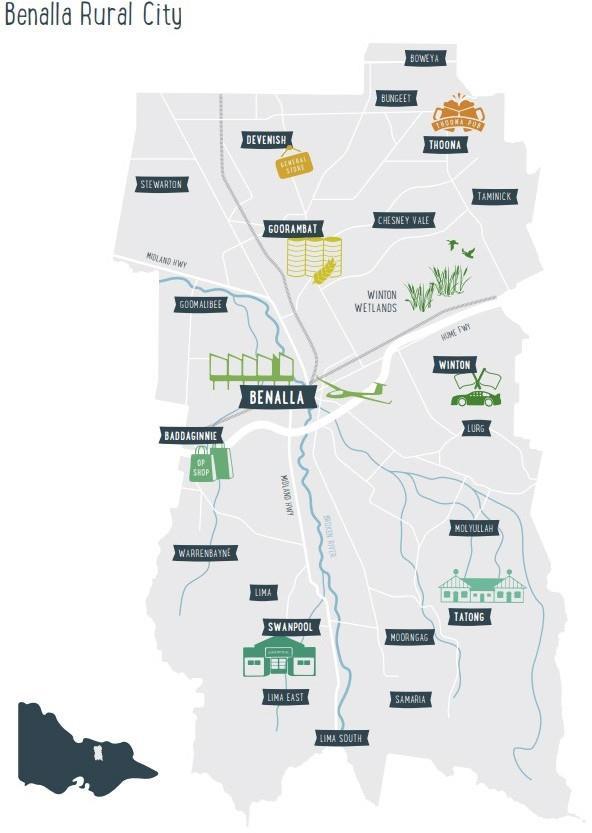
The area’s economic sectors reflect Benalla’s role as a regional centre: agricultural production, tourism and the manufacturing, retail trade, health and community services sectors.
The proportion of people average. The rural areas of the municipality are recognised for their quality soils and many areas have access to good irrigation.

The major agricultural industries are prime lamb and beef production, some dairying and broad acre cropping. Recent agricultural diversification has seen a rise in viticulture, more intensive forms of horticulture and forestry.
1 Retrieved from the Australian Bureau of Statistics, https://abs.gov.au/census/find-censusdata/quickstats/2021/LGA21010
The main tourism attractions include, but are not limited to, the Winton Motor Raceway, Winton Wetlands, State Gliding Centre (Benalla Airport), Benalla Gardens and Showgrounds, Aboriginal Gardens and the Benalla Art Gallery.

Benalla Rural City offers a lifestyle that a choice of primary and secondary schools, a TAFE college, comprehensive health services and a wealth of participation opportunities including theatre, sport, surrounding Botanical Gardens and walking track, is a key attraction located within the town. Benalla Rural City has well developed disability, aged care and childcare services.

Traditional Owners
Benalla Rural City Council has recently submitted their first Reconciliation Action Plan (RAP) to demonstrate our commitment to reconciliation and to acknowledge the Traditional Custodians of the land on which we operate. We recognise the importance of building respectful relationships with Aboriginal and Torres Strait Islander peoples and promoting equality, inclusivity, and diversity within our organisation and the broader community.
Benalla Rural City was traditionally a meeting point for three distinct mobs, Yorta Yorta, Taungurung and Pangerang. They are the traditional custodians of this land, and Benalla Rural City Council recognises the importance of connection to Country and pay our respects to their elders past and present.
Promoting inclusion with the Benalla Aboriginal and Torres Strait Islander Advisory Group within Council operations will help strengthen this tie, as the First Nations peoples of this land have deep connections and commitments to the community which they represent. By working in partnership, Benalla Rural City and the Benalla Aboriginal and Torres Strait Islander Advisory Group can improve upon:
▪ employment and economic development
▪ health and wellbeing
▪ recognition and
▪ civic participation.
▪ planning
▪ environmental protection
▪ reconciliation
▪ service delivery
▪ governance
▪ land management
▪ protection of homelands
We are thankful for the other Aboriginal and Torres Strait Islander people have contributed to this Strategy.
Community Vision
This strategy was developed Council staff made available multiple community to share their ideas and provide input. These opportunities included:

▪ Online survey on Council’s Hive page.
▪ Four workshops at Baddaginnie, Swanpool, Goorambat and Benalla.
▪ Workshop held with the Full Impact Squad- a youth group supported by the Tomorrow Today Foundation.
▪ Workshop was also held with several members of the local Aboriginal Advisory Committee.

From this, Council staff received 61 submissions from the online survey and the workshops were well received with 90-100 attendees across all four workshops. The feedback provided invaluable information for the Environment team to structure this strategy and it also provided a welcoming and engaging conversation between Councillors, community members and Council staff.
Throughout this process Council sought input on five key focus areas. The most common and considered as significant input by the community were:
▪ net zero
▪ biodiversity and regeneration
▪ circular economy
▪ water sensitive communities
▪ sustainable communities.
Across the engagement there were several recurring themes and suggested actions. These included:
▪ Council to set a net zero target and acknowledge the climate is in a state of emergency.
▪ Transition Council’s fleet to low carbon vehicles.
▪ Increase canopy cover.
▪ Increase biodiversity intervention and community driven projects.
▪ Minimise the removal
▪ Increase protection
▪ Increase education circular economy.
Internal and Strategic
The Strategy is an extension of the Council’s values and principles which will help shape Benalla Rural City as environment for the Benalla community. As stated in the previous Environment Strategy, the Council will employee principles the Strategy, which will enhance the ability of Council to achieve its stated vision, goals and objectives outlined in this document. These same principles apply to this new Climate and Environment Strategy.
Council (as an organisation)
▪ Participation: Early and honest engagement with the community around significant actions and will where appropriate.

▪ Working together: Development and maintenance of relationships to achieve our goals – includes using local service providers where possible.
▪ Justifiable: All works will consider the environmental impact and will be subject to Council risk assessment mechanisms and legislative requirements. This includes an environmental, social, cultural and economic analysis where appropriate (i.e. for projects likely to have significant impacts or costs).
▪ Empowerment: Education and information will be designed to support individuals to take action in their own way.
▪ Respect: Council will respect different views and ideas, try to accommodate them where possible, and provide a reasonable explanation where it’s not possible.
▪ Accountability: Council will be accountable for the actions it delivers and the immediate outcomes that are expected to be attained.
▪ Continuous improvement: Council will show leadership in environmental sustainability, monitor its progress, report to the community, and involve the community in planning for improvement.
Councillors, staff, contractors and consultants will:
▪ Ensure that activities are conducted in accordance with this policy.
▪ Follow all departmental environmental procedures, signage and guidance.
▪ Foster a culture of environmental responsibility at work by reducing consumption of resources.
▪ Complying with environmental regulations.
▪ Reuse and recycle resources, where possible, to minimise waste-to-landfill and further reduce our impact on the environment.
▪ Limit our greenhouse gas emissions by minimising energy use in our offices and operations and making environmentally responsible travel decisions.
▪ Respect all natural and cultural heritage areas - threatened species and communities, historical, cultural and Indigenous heritage and areas of high conservation value.
Alignment with the
The Benalla Rural City is a guiding document that sets short- to long-term goals for Council and the community to works towards creating a vision for the future of Benalla Rural within the mediumterm objectives of the Council Plan.
Collaboration with the community established five themes as the framework for the key objectives and strategies within the Council Plan. Each of these themes has a short-term objective to develop achievements and performance against key success measures communicated to the community.
This action plan can be found at the end of this document outlining the timelines for each action within the key to meet its shortterm objectives.
The key focus areas of the Climate and Environment Strategy are linked to these themes through actions that These themes are:


United Nation’s Sustainable Development Goals
In 2015 the UN set 17 Sustainable Development Goals (SDGs) to provide a blueprint for peace and prosperity for people and the planet, now and into the future. The target to achieve these goals was set for 2030.
This is a call to the 193 countries who committed to the target to recognise that ending poverty goes hand-in-hand with strategies that improve health and education, reduce inequality and encourage economic growth – all while tackling climate change and working to preserve our oceans and forests 2

Australia is one of the 193 countries which have committed to the goals. It will require all stakeholders, state governments, Australia to meet the 2030 target.

To show Benalla’s commitment to the SDGs, each key focus area has been linked to the relevant SDGs.
2 Retrieved from the United Nation’s Sustainable Development Goals, https://sdgs.un.org/goals
Environment Strategy Achievements
This is the third Climate and Environment Strategy that Council has developed in consultation with numerous stakeholders to deliver key actions to help Benalla Rural City tackle climate change.
The last strategy listed several key achievements that had been implemented since the last strategy was developed.
The actions that Benalla Rural City set out in the last Strategy that have been implemented are below:
▪ Developed a Climate Change Adaptation Plan 2013-2025.
▪ The RecLess: Less Water, Less Often, More Resilient Open Spaces Project. Partnership with Alpine Shire Council.
▪ The Goulburn Broken Greenhouse Alliance ‘Watts Working Better’ project was launched in 2014 across Benalla Rural City Council.
▪ Energy efficiency 2018 and 2019.
▪ Net Zero Action
▪ Working alongside (GMCA) on regional projects such as; Naturally Cooler Towns and Resilient Public Estate.
In addition to these key also been implemented:
▪ Tree planting day.
▪ Community environmental Australia Day.
▪ Key partnerships
▪ Material recycling
▪ Efficiency upgrades
▪ Procurement of emissions.
▪ Two electric vehicles to Councils fleet.

Environmental Context
Benalla Rural City has a diverse and varied landscape, with beautiful state and federal parks, numerous waterways and native plant and animal species. Council has implemented projects that have contributed to reducing carbon emissions that have an impact on the Benalla environment.
Our environmental context in numbers:
Insert Gaphic to show figures
▪ 2472km of managed road reserves.
▪ 155ha of managed bush
▪ 1500 native plants
▪ 1794 tonnes of
▪ 1809 native flora under the FFA and EPBC.
▪ 1277 of trees planted Program.
▪ 20 tonnes of donated since 2022.
▪ 120kW of solar per cent of Council annual electricity.
▪ Nine per cent
▪ Four hybrid and
▪ Two Council used vehicle charging stations for public use.

Landscape
Benalla’s central location in regional Victoria is divided by the Hume Freeway with hills, valleys, grazing land and forests to the south and plains and rolling hills used as cropping and grazing land to the north. The south, east and north-east landscape retains a greater native vegetation cover whilst land to the north-west and west supports dry land and irrigated cropping.
Situated around Lake Benalla, which is a significant natural feature of local and regional importance, Benalla has four major reserve areas; Mount Samaria State Park, Warby-Ovens National Park, Reef Hills State Park and the Winton Wetlands, these state par roughly five per cent of the land area. It is a predominately rural area, land used for agricultural purposes, including wool and meat production, dairying and crop farming, followed by

Thirty per cent of Benalla land is for public use, with three national parks comprising of 8,730 ha or 3.7 per cent of the total 235,264 ha of land (2,350 square kilometres). It sits within the Ovens Murray north, with access to Victoria’s High Country.
Waterways
Benalla Rural City contains a number of tributaries of the Broken River and a significant portion of the Broken River itself, which is regulated by Lake Nillahcootie, to its southern border. The Broken River into the Murray River.

The Broken Creek is the Broken River and joins directly with the Murray upstream of the Goulburn River, making it a part of the Murray Basin.
Benalla’s water is sourced from the Ryans and Whiskey Creeks, which fills the McCall Say Reservoir and the Loombah Reservoir. These reservoirs have a combined capacity of 1,747 megalitres, of which Benalla typically uses 1,400 megalitres each year.
Bioregions
Biogeographical Regionalisation for Australia (IBRA) is a national planning framework and tool for identifying reservation targets, defining terrestrial habitats and ecoregions, and vegetation community and land system mapping to be used to identify regional ecosystems across Australia 3
3 Retrieved from Department of Climate Change, Energy, the Environment and Water, https://www.dcceew.gov.au/environment/land/nrs/science/ibra/australias-bioregion-framework
It classifies the environment using a range of attributes such as climate, geomorphology, geology, soils and vegetation. In Victoria there are 28 bioregions. Of those, four bioregions makeup the landscape within Benalla’s borders, which are:4
▪ Central Victorian Uplands (CVU)
▪ Highlands - Northern Fall (HNF)
▪ Victorian Riverina (VRiv)
▪ Northern Inland Slopes (NIS).
The CVU region, located in central Victoria, is dominated by Lower Paleozoic deposits (granitic and sedimentary terrain, old volcanic rock). The vegetation is made up of Grassy Dry Forest, Healthy Dry Forest, Herb-rich Foothill Forest and Shrubby Foothill Forest ecosystems.
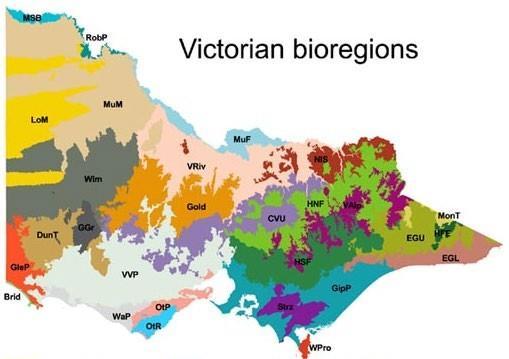
The HNF region, located in the central part of East Victoria, is the northerly aspect of the Great Dividing Range. With moderate to steep slopes, high plateaus and alluvial flats, the geology is Palaeozoic vegetation is Herb-rich Foothill Forest, Shrubby Dry, Montane Dry Woodland, Heathy Dry Forest, Grassy Forest and Valley Grassy Forest ecosystems with major river valleys.
The VRiv, located north undulating landscape with evidence of former stream channels and wide floodplain areas associated with major river systems and prior streams. It’s part of the Cainozoic period which dominates the Riverine Plain.
The vegetation is predominately Plain Grassy Woodland, Plains Grassland, Pine Box Woodland/Riverina Plain Grassy Woodland Mosaic, Riverine Grassy Woodland/Riverine Sedgy Forest/Wetland Mosaic, Plains Grassy Woodland/Gilgai Plains Woodland/Wetland Mosaic, Grassy Woodland associated with eight river basin tributaries of the Murray River.
The last bioregion is slopes and minor ranges separated by river valleys which drain from the High Country to the Murray River.

The vegetation is dominated by Grassy Dry Forest, Box Ironbark Forest, Granitic Hills Woodland, Heathy Dry Forest and, Shrubby Dry Forest ecosystems on the less fertile hills; Herb-rich Foothill Forest ecosystems on the more fertile hills and outwash; and Grassy Woodland, Valley Grassy Forest, Plains Grassy Woodland, Floodplain Riparian Woodland, Riverine Grassy Woodland, Riverine Sedgy Forest and Wetland ecosystems on the fertile plains and watercourses.
4 Retrieved from the Victorian State Department of Energy, Environment and Climate Action, https://www.environment.vic.gov.au/biodiversity/bioregions-and-evc-benchmarks
Flora and Fauna
The Benalla LGA is home to a number of rare and endangered species listed under the Fauna and Flora Guarantee Act 1988 (FFG Act). Rare and endangered native fauna such as, Squirrel gliders, brush-tailed phascogales (Tuan) and bush stone curlews are all found within the Benalla Rural City municipality.
It’s also home to species listed as endangered and critically endangered under the Environment Protection and Biodiversity Conservation Act 1999 (EPBC Act).
This includes the Critically endangered Regent Honeyeater Anthochaera Phrygia, which is primarily a canopy bird and is reliant on select eucalypt and mistletoe species, including Mugga Ironbark, Eucalyptus sideroxylon and Yellow Box, Eucalyptus melliodora

The Benalla Planning Scheme seeks to protect and stop the removal of native vegetation that support Regent honeyeater (Clause 42.02 Schedule 3). The Vegetation Protection Overlay (VPO) covers Honeyeater in the East side of the municipality.
Another endangered species supported by the Benalla Planning Scheme is the Greycrowned Babbler (Clause preferred habitat is significantly fragmented and why a VPO on the west side of the municipality is so important.
Protecting vegetation Woodland is crucial for the species.

The Lima stringybark Eucalyptus alligatrix subspecies limaensis, which is endemic to a small area near Swanpool and listed as endangered under the EPBCA Act. It is confined to a very small area and highly fragmented with higher normal level of risk to common threats. Continued protection juvenile recruitment is required.
One of only a small number of remnant populations of Macquarie Perch exists within the Broken River and Hollands creek systems within Benalla Rural City. Macquarie Perch are also listed as endangered under the EPBC Act and FFG Act, after a long-term decline in abundance and a reduction in self-sustaining populations.
Climate Change Context
Victoria’s climate has changed over the years due to changing weather systems, seasonal influences and large-scale climate drivers.
The state is becoming hotter and overall drier with extreme weather events shaping how Victorians must adapt. According to the Victorian Climate Science Report 2019, Victoria has experienced a temperature increase of over 1C from 1910 to 2018, double the number of days over 35C, a longer and more intense fire season and more days of heavy rain.5 All of this is expected to continue to increase in the future if nothing is done to combat climate related disasters.
The area in which Benalla Rural City resides is in the Ovens Murray region. This region is also impacted by these extremes, with projections that indicate median maximum temperature rises of 1.4C by the decade between 2030-2040 and 2.4C by mid-century under high emission scenarios.6
This is expected to result in more extreme rainfall events, maximum daily temperature increases, and longer and earlier fires seasons since the mid 1900s. Overall, just like Victoria as a whole, the warmer and drier, with these changes largely contingent gas emissions (GHG).
There are actions that can be taken now to limit these extreme dangers and avoid the worst impacts of climate change. Under a low emissions scenario, Victoria’s average temperature increase could be less significant and by 2050 the state’s temperature rise could be kept to below 1.5C and 1.6 scenario action must be taken now.
In recent years Benalla hot spot in Victoria by the SES, with flooding incidents for 2022 to 2023 increased by 130 per cent to the previous financial year.
A changing climate poses biodiversity, water resources, sustainable and thriving communities and the economy.
Key Areas

In the table below Council has identified five key areas that will have the most significant gains in delivering this strategy. Each focus area has a vision and actions which Council will prioritise over the next five years.
The actions in each focus area align with the Council Plan on developing short-term action plans that sit within each theme to hold Council and the community accountable to progress in implementing these actions. The action plans will be updated to reflect any progress which has been made (Table 7). The key areas have also been linked to the UN Sustainable Development Goals (SDGs).
5 Retrieved from Victoria’s Climate Science Report 2019, https://www.climatechange.vic.gov.au/victorias-changingclimate
6 Retrieved from the Ovens Murray Climate Projections 2019, https://www.climatechange.vic.gov.au/victorias-changingclimate
Table 1: Five Key Focus Areas
Net Zero
Biodiversity and Regeneration
Circular Economy
Water Sensitive Communities
Sustainable Communities
Key Focus Area 1: Net Zero



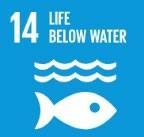
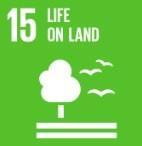
Net zero emissions means reducing the world’s greenhouse gas emissions to as close to zero as possible with available technology. This means Australia must rapidly phase out fossil fuels (coal, oil and across all sectors of the economy.
Setting an aspirational government. Be it federal, state or local government it establishes leadership and demonstrates commitment to actions based on factors such as available budget, political will or community expectations.

By establishing a net zero target councils can work with actions that are most pressing in reducing their emissions first, while working with key stakeholders and the community to reduce emissions from actions that require more long-term planning and budget.
Given recent instances of extreme temperatures (2023 being the hottest year on record), flooding, and wildfires across the global, the urgency for the Council to take action in reducing emissions and meeting net zero has never been greater. Relying solely on the purchase of carbon offsets is insufficient in the face of these extreme natural disasters.
The Victorian Government has a net zero target of 2045, with 75-80 per cent reduction by 2035. The Australian Government has set a net zero target of 2050, with an interim target of 43 per cent below 2005 levels in 2030.
Other councils around BRCC have set targets between 2030-2050. The Council has recently endorsed a Net Zero Action Plan which has set a net zero target for all corporate emissions excluding waste by 2035/2036 and including waste by 2040/2041. This Action Plan sits under the short-term planning objectives within the Council Plan.


“Continue



In response to workshops conducted earlier this year and feedback from the community, Council has set a vision a Net Zero Action Plan in 2024 which aligns with this focus area. The actions in that plan have been added to provide continuity between the two documents.
Table 2: Net Zero Action Plan
Action Plan
Key Focus Area 1- Net Zero
Description
Council to employ an Officer to a minimum of 0.6 FTE position to assist in the delivery of the Strategy and Net Zero Action Plan.
Transition to 100 per cent renewable energy (VECO 2.0).
Transition Council’s passenger vehicle fleet to low carbon vehicles.
Transition Council’s vans to low carbon vehicles.

Council to demonstrate leadership in response to Ongoing owned 2026/27 or 2025/26 and where applicable. Ongoing
Incorporate the new Climate and Environment Strategy in the review of the planning scheme to help inform our local policy in the planning scheme. 2026/27
Case Study: EV Chargers and Council fleet
There is a continual rise in Electric Vehicles (EVs) on roads and hence a rising need for places to charge them. EVs are becoming more and more popular as the need and want to reduce our emissions quickly grows.
One of the issues that has slowed the rate of EV adoption is the lack of charging infrastructure. Minimal charging infrastructure has been a deterrent for many who are wanting to transition to an EV. As support and demand has increased more charging options have begun to appear and substantially more are on their way.
Benalla Rural City sits an ideal location as the gateway to the North East and Goulburn Murray Regions and for travellers heading up and down the Hume. Furthermore, there is a growing need and want within the local community for EV chargers.
Currently, there are three chargers in the municipality to the public with a dual charger located in the Denny Street Carpark in Benalla and another provided by Schnieder Electric available during certain section of Carpark to Tesla for the purpose of installing 10 superchargers with another 10 to follow to meet with demand.
There is also a rise in accommodation providers in the municipality offering charging to tenants, providing visitors overnight while they stay. It is a fantastic incentive to attract and something that will hopefully become more common.
Furthermore, Benalla Rural City has brought its first EV into Council fleet in the last 12 months. This is the start fleet, reducing Councils future emissions.

Key Focus Area 2: Increase Biodiversity




Biodiversity defines all life on Earth, it provides basic necessities and essential resources and services to all people.7 A study conducted by the Intergovernmental Panel on Biodiversity and Ecosystem Services (IPBES) found that up to one million of Earth’s estimated eight million plant, insect and animal species are at risk of extinction within the next few decades.
Climate change has harms Australians’ air and water, energy and food, health and well being and tourism to name a few. A lack of biodiversity affects our natural areas, parks and recreation that provide numerable benefits to society, the economy and the environment. Benalla Rural City Council contains high value flora (plants) and species of fauna that are threatened.
The Flora and Fauna Guarantee Amendment Act 2019 lists a number of threatening processes to biodiversity. The most significant issues for Benalla Rural City Council are invasive species, climate harmful to agriculture in the area.
The Victorian Government through the Biodiversity 2037 Plan. This plan outlines ways communities can start planning and regenerating biodiversity loss by:
▪ Managing threats animals and inappropriate regimes.
▪ Increase habitat and connections.
▪ Enhance biodiversity by directly managing species through numerous actions.

▪ Provide suitable habitat for species of conservation importance- both native and nonnative.
▪ Promoting biodiversity benefits in human-centered settings, such as soil conservation practices, carbon sequestration, and stocking waterways with native fish for recreational fishing to name a few.
Benalla’s Roadside Vegetation Management Plan recognises that a high priority will be given to retain existing native vegetation, prevent decline of indigenous vegetation communities, enhance priority habitats and improve connectivity. It further states that natural regeneration of indigenous vegetation will be protected and encouraged and a priority for natural regeneration and rehabilitation programs should be roadsides that form strategic biological corridors.
7 Retrieved from the Royal Society of Victoria, Towards conservation & Recovery of Victoria’s biodiversity.
8 Retrieved from Victorian Government, Protecting Victoria’s Environment- Biodiversity 2037
There are numerous councils within Victoria that are adopting biodiversity policies and toolkits to address this critical issue. BRCC has recently received a vegetation grant that can be utilised for biodiversity and regenerative projects.
In October the 2023 Street Tree Planting Program was completed, which saw 70 new trees planted in nature strips around Benalla.
The types of trees selected considered factors such as local conditions, climate and the existing streetscape. In addition, the trees planted are known for their resilience to pests and disease.





In response to workshops conducted earlier this year and feedback from the community, Council has set a vision order to achieve this Council has identified the below actions to help progress in this focus area.
Table 3: Biodiversity

Council to partner with other agencies to advocate and protect wildlife.
Support the Winton Wetlands restoration project where possible.
Council to continue to work on rehabilitating the Holland Bio Link.
Council to deliver a New Pest and Weed Control Plan.
Map and register trees of cultural significance on public property.
Mapping of existing tree canopy in the Benalla Rural City. Ongoing
Case Study: Hollands Bio Link Channel
In November 2014 Benalla Rural City, with the assistance of the Inlet Channel Management Plan Advisory Committee, developed the Holland Bio Link Reserve Management Plan. The Management Plan outlined the strategies and desired outcomes for the reserve that contained the decommissioned Mokoan inlet channel stretching from the Winton Wetlands (formerly Lake Mokoan) to Hollands Creek.
The entire approximately 13km by 110m reserve is classified as ecological vegetation class (EVC) 55 Plains Grassy Woodland. EVC 55 is classified as endangered within the Goulburn Broken Catchment and contains key canopy species such as Grey Box (Eucalyptus macrocarpa) and River Red Gum (Eucalyptus camaldulensis).
The reserve was split into three Zones with works to rehabilitate Zone 1 beginning in 2015. Around 12,000 plants have been planted in Zone 1 since the adoption of the management plan, with plants chosen based on species naturally found in Plains Grassy Woodland areas.
BRCC has been lucky throughout the life of the management plan. RHP and their volunteers, have been a major asset to have partnering with Council on this project. Support from the GB CMA has also been an important to the success of the project.
The next steps in this project include assessment and revision the Holland Bio Link Management Plan and with Hollands Creek.
Key Focus Area

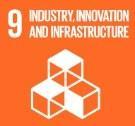


A circular economy is centred on the idea of resources being kept as long as possible within the economic system, where materials that have undergone an entire lifecycle, from product to the end stage, are returned to that same system. It focuses on not only finding ways to keep products in production, but sourcing products that have a longer lifespan and are produced with less impact on the environment.
Councils and communities have an opportunity to make a difference in the quantity of waste being sent to landfill using the principles of the three Rs: Reduce, Reuse and Recycle. If Council and the businesses within the community replace the linear take-make-waste model with a circular model based on reused, recycled, or repaired materials and products, the amount of waste sent to landfill would drastically decrease.
With the Benalla Landfill and Resource Recovery site currently accepting waste from other councils, incorporating practices of a circular economy into not only Council’s own operations, but mandating other Councils do the same is paramount.
Keeping materials and products in use and treating waste as a resource a circular economy in return will:
▪ Save costs (potentially boosts Victoria’s economy by $6.7 billion by improving material and efficiency and recycling.9
▪ Minimise demand on resources.
▪ Lower carbon emissions.
▪ Reduce legacy landfill emissions and pollution.
In 2020, the Victorian Government set a progressive plan for a circular economy. From that plan there are five key takeaways that Council can do to start incorporating a circular approach to their waste. They are:
▪ Provide a new four
▪ A cash for cans
▪ A stronger waste
▪ New recycling laws
▪ A statewide ban

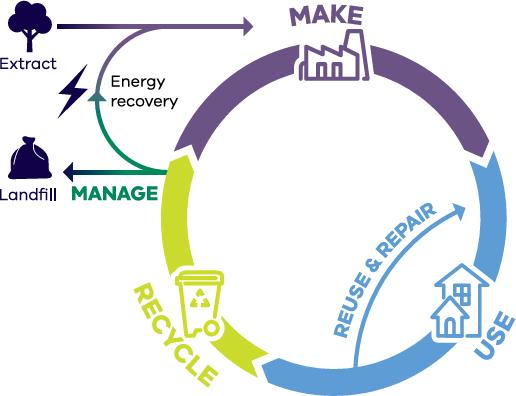
9 Retrieved from the Victorian Government’s circular economy policy and plan, https://www.vic.gov.au/victorias-plancircular-economy
10 Retrieved from the Victorian Government’s circular economy policy and plan, https://www.vic.gov.au/victorias-plancircular-economy
By implementing a more circular approach to waste Council will be able to benefit significantly. A few of those benefits are outlined below:
▪ Increase the quality and volume of recycling and reuse of our precious resources.
▪ Reduce waste, landfill and litter.
▪ Reduce emissions and contribute to Victoria’s net-zero emissions by 2045.
▪ Create new jobs.
▪ Build a sustainable and thriving circular economy for a cleaner, greener Victoria.




In response to workshops conducted earlier this year and feedback from the community, Council has set a vision economy within the Benalla community. The actions have been identified in this action plan below.
Table 4: Circular Economy
Action Plan Financial year to be completed Key Focus Area 3 –Circular Economy

Council to continue to attract business with a focus on renewable energy services. Ongoing
Council to work with businesses to promote the benefits of a circular economy. Ongoing
Council to attract business that can process problematic waste. Ongoing
Council to update procurement policy to include a focus on environment and sustainability in Council's capital works programs. 2025/26
Council to increase resource recovery opportunities at Councils owned and operated Resource Recovery Centre, including the feasibility of a resale shop.
2026/27
Case Study: Clothes swap and textile recycling
In June 2022 Benalla Rural City teamed up with A Fitting Connection to host a Clothes Swap at the local CWA hall in Benalla. People could bring five items of clothing to donate and then exchange them for five new-to-them items. It was very well received by the community with around 50 attendees who wanted to see their clothes reused or appropriately recycled. A Fitting Connection works with a company called Upcycle4Better who provided a textile recycling bin at the clothes swap event for any item’s leftover at the end.
Building on from this connection with Upcycle4Better a textile recycling program was then put in place at the Benalla Landfill and Resource Recovery Centre. It has been very well received with many people dropping their old clothes, shoes, soft toys, and other textiles off to be recycled or repurposed. The service is free for residents of Benalla to use. This new service means old and unusable textiles can now be diverted from landfill and repurposed or recycled.
Since installing the textile Centre Council have received contact from multiple Victorian councils as well as some interstate Councils. The uptake of textile recycling within Benalla Rural City has been fantastic and will hopefully continue to grow, so less makes its way to landfill.
Key Focus Area



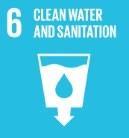

Water is integral to communities throughout Australia, both in urban and rural landscapes. Having a healthy water system is crucial for human and ecological systems to thrive. It services a large range uses to farmland and agricultural irrigation. Water is also a crucial resource for local flora and fauna to thrive and for sustaining our open spaces and natural environment the community uses on a daily basis.
The three most critical challenges Benalla and its surroundings face in managing water are a growing population with varied and changing lifestyles, climate change and a challenging economic environment.
Benalla Lake is a prominent feature of the town that is experiencing ongoing water quality issues from aging sewerage systems and septic tanks leaching into the lake. The flow on effect from the high nutrient loading into the system is water weed infestations and algae bloom outbreaks. Litter and supermarket shopping trollies are also an ongoing issue for the management of the lake. During flood and high rainfall events the lake experiences heavy siltation and further erosion of its banks.
A long-term goal for Benalla will be to become a water sensitive community. A water sensitive community is a place:11
11 Retrieved from CRCWSC website, What makes a city water sensitive, https://watersensitivecities.org.au/what-is-awater-sensitive-city/
▪ That has the potential to serve as water supply catchment, providing a range of different water sources at a range of different scales and uses.
▪ That provides ecosystem services and a healthy natural environment, thereby offering a range of social, ecological and economic benefits.
▪ Where community members have the knowledge and desire to make wise water choices.
▪ Address lake contamination and water quality.
11 Retrieved from CRCWSC website, What makes a city water sensitive, https://watersensitivecities.org.au/what-is-awater-sensitive-city/
Water sensitive communities can be described as resilient, liveable, productive and sustainable.
▪ In a water sensitive community, the way the community interacts with the water cycle plays a crucial part by12:
▪ Providing the water security essential for economic prosperity through efficient use of diverse available resources.
▪ Enhancing and protecting the health of waterways and wetlands and the river basins that surround them.
▪ Mitigating flood risk and damage.
• Creating public spaces that collect, clean and recycle water.





“Planting
12 Retrieved from CRCWSC website, What makes a city water sensitive, https://watersensitivecities.org.au/what-is-awater-sensitive-city/
In response to workshops conducted earlier this year and feedback from the community, the Council has set a vision to manage stormwater and water across the municipality. This is the first step needed in order to become a more water sensitive community, and the action outlined will help the Council achieve this vision.
Table 5: Water Sensitive Communities Action Plan
Action Plan
Key Focus Area 4 – Water Sensitive Communities
Case Study: Cabomba
Description
Council to create a stormwater management plan in response to the contamination, litter and weed issues in the town’s lake.
2026/27
Council to continue to promote water reduction activities. Ongoing
Council to partner with lead agencies on water Ongoing
Cabomba (Cabomba caroliniana) is an introduced aquatic weed that originated from South America. Cabomba is regarded as one of the worst weeds in Australia. Cabomba spreads rapidly, reproducing vegetatively from stem fragments which easily break away from the parent plant. Cabomba was identified in Benalla in 1990 with major treatments done in 2009, 2010, 2012, 2018 and 2021. Past treatments have included a combination of n the water level in Lake Benalla to allow the Cabomba to dry out, as well as mechanical removal.
Current treatment methods aesthetically unpleasant. Due to this, new treatment methods are being explored with one currently being tested on a couple of sites in Queensland. The Cabomba weevil ( natans) is an aquatic weevil that spends its substantial damage to the plant both in the adult and larval stages.

Trials are currently underway at multiple sites in Queensland and NSW following positive testing results from CSIRO. Although, the Cabomba weevil is unlikely to remove the weed altogether it may prevent the frequency of large infestations and keep Cabomba at more manageable levels.
Since the last drawdown in 2021, there have been no reports of Cabomba in the Lake Benalla area. However, it is unlikely Cabomba has disappeared altogether and will likely show up again. Benalla Rural City will continue to work closely with the GB CMA to monitor Cabomba in Lake Benalla and assess potential major infestations.
Key Focus Area 5: Sustainable Communities




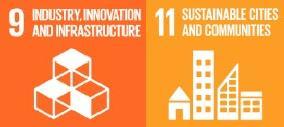
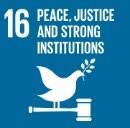
A sustainable community takes into account the five capitals models which provides a framework for sustainability at all levels. It accounts for the human, social, natural, financial and manufactured capital of a society and makes sure all are addressed fairly and equitably, while ensuring resources to sustain a community are available now and for future generations. It’s a place where diverse backgrounds and perspectives are welcomed, and where all groups within that society can come together to make decisions for the betterment of their community.
Sustainable communities require long term planning, where the decisions we make as a society today will have major impacts decades later. One of the biggest threats to sustainable communities is climate change. To that end, action needs to be taken now to build upon the work Council sustainable and resilient Benalla.
The Green Building Council stakeholders to identify five principles that support the sustainable transformation for a society. The five principles are:13
▪ Demonstrate visionary
▪ Enhance liveability.
▪ Create opportunities
▪ Foster environment
▪ Embrace design
These principles require Benalla’s community to see this vision achieved.
“Advocate for ESD Policy”



“Support and promote Food Co-Ops and community gardens”.

“Improve subdivision planning process”.

“Include environmental and climate change learnings in early education”.
10: Feedback from community
In response to workshops conducted earlier this year and feedback from the community, Council has set a vision to become a more sustainable community. By incorporating these actions into this Strategy Council will be able to meet it’s target and vision for this focus area.
13 Retrieved from Green Building Council of Australia. Green Star- Communities Guide for Local Government
Table 6: Sustainable Communities Action Plan
Action Plan
Key Focus Area 5 – Sustainable Communities
Description
Council to partner with health agencies to promote the benefits of home garden.
Council to create a food share space
Consider the establishment of a native food garden.
Recognise and protect the integrity of traditional indigenous NRM knowledge, support traditional knowledge exchange and when permitted use it with respect.

Council to engage with those who are culturally and linguistically diverse (CALD) and those who economically disadvantaged, to build understanding and resilience to climate
Case Study: Benalla Grow Your Own – Benalla Health
Between 2016-19 the Benalla Grow Your Own (BGYO) project provided 74 wicking garden beds to vulnerable families living in Benalla. The garden beds were built in partnership with Benalla Health, St Vincent de Paul Society of Benalla, Beechworth Correctional Centre and Benalla Men’s Shed.
The project was established in response to the growing issue of food insecurity from young families in Benalla. A food security scan prior to the project indicated 8.4 per cent of residents in Benalla had reported that they had run out of food and were unable to purchase more in the last 12 months. With food insecurity also correlated with low fruit and vegetable intake.
In 2021 a Survey was completed by 47.4 per cent of eligible participants to assess the results of the program. Of the surveyed, 93 per cent felt they were better able to provide for their family with 85 per cent indicating life was better because of the garden. Half indicated they had increased their gardening activities during the COVID 19 Pandemic and 63 per cent indicated improved mental health.
The garden beds continue confidence growing their own food whilst improving nutrition, physical activity, social connection, and mental health outcomes.

Action Plan:
Table 7: Council Action Plan for Key Focus Areas
Key Focus Area 1- Net Zero
Council to employ an Officer to a minimum of 0.6 FTE position to assist in the delivery of the Strategy and Net Zero Action Plan. 2025/26
Transition to 100 per 2024/25
Transition Council’s passenger 2029/30
Transition Council’s vans 2026/27
Transition Council’s utility vehicles 2032/33
Review the current Fleet 2024/25
Audit Council owned buildings and facilities. Ongoing
Council to demonstrate leadership in response to Climate Change Ongoing
Install solar PV onto all 2026/27

Explore opportunities for a community battery or microgrid. 2025/26
Ensure changing rainfall, flooding, bushfire and drought patterns are included in all Council strategies and asset management plans where applicable. Ongoing
Incorporate the new Climate and Environment Strategy in the review of the planning scheme to help inform our local policy in the planning scheme. 2026/27
Key Focus Area 2 –Increase Biodiversity
Council to increase tree planting program to create habitat for fauna and flora. 2024/25
Council to review the roadside management plan with consideration to pest and weed control program. 2024/25
Key Focus Area 3 –Circular Economy
Council to partner with other agencies to advocate and protect wildlife. Ongoing
Support the Winton Wetlands Ongoing
Council to continue to Ongoing
Council to deliver a New 2023/24
Map and register trees 2024/25
Mapping of existing tree Ongoing
Provide educational programs recycle and repair. Ongoing
Council to conduct a bin in the rural areas. 2025/26
Council to implement 2027

Council to consider the feasibility of organics waste bin for rural townships and properties enroute able to opt in. 2025/26
Council to continue to attract business with a focus on renewable energy services. Ongoing
Council to work with businesses to promote the benefits of a circular economy. Ongoing
Key Focus Area 4 –Water Sensitive Communities
Council to attract business that can process problematic waste. Ongoing
Council to update procurement policy to include a focus on environment and sustainability in Council's capital works programs. 2025/26
Council to increase resource recovery opportunities at Councils owned and operated Resource Recovery Centre, including the feasibility of a resale shop.
Council to create a stormwater contamination, litter and weed issues in the town
Key Focus Area 5 –Sustainable Communities
2026/27
2026/27
Council to continue to Ongoing
Council to partner with Ongoing
Council to partner with Ongoing
Council to create a food 2025/26
Consider the establishment 2025/26
Recognise and protect the integrity of traditional indigenous NRM knowledge, support traditional knowledge Ongoing

Embed Climate Resilient designing and maintaining infrastructure 2025/26
Embed Environmentally Sensitive Design (ESD) principles into all development Ongoing
Council to engage with those who are culturally and linguistically diverse (CALD) and those who are socially and economically disadvantaged, to build understanding and resilience to climate change. Ongoing
References
Australian Bureau of Statistics. (2024). Benalla 2021 Census. Retrieved from https://abs.gov.au/census/find-census-data/quickstats/2021/LGA21010
Benalla Health. (2022). Benalla Grow Your Own 5 Year Evaluation. Benalla; 2022
Benalla Rural City Council. (2016). Benalla Rural City Community Plan 2016-2036. Retrieved from https://www.benalla.vic.gov.au/Your-Council/CouncilDocuments/Community-Plan
Benalla Rural City Council. (2021). Benalla Rural City Council Plan 2021-2025. Retrieved from https://www.benalla.vic.gov.au/Your-Council/Council-Documents/Council-Plan-20212025
Benalla Rural City Council. (2022). Benalla Planning Scheme. Retrieved from https://www.benalla.vic.gov.au/Your-Property/Building-Planning/Planning/Benalla-Planning-Scheme
Benalla Rural City Council. (2022). Road Management Plan 2021-2025. Retrieved from https://www.benalla.vic.gov.au/Your-Council/Council-Documents/Other-Plans-Strategies/Road-ManagementPlan
Benalla Rural City. (2024) Roadside Weeds and Pests Program Control Plan 2023-2026. Retrieved from https://www.benalla.vic.gov.au/Your-Council/Council-Documents/Other-Plans-Strategies/Roadside-Weedsand-Pest-Plan
Benalla Rural City Council. (2014). Roadside Vegetation Management Plan. Retrieved from https://www.benalla.vic.gov.au/Your-Council/Council-Documents/Other-Plans-Strategies/RoadsideVegetation-Management-Plan
Brondizio, E. Diaz., S, Settele, J. & Ngo, H. (2019). The global assessment report on biodiversity and ecosystem services IPBES,1, 56. https://doi.org/10.5281/zenodo.3831673
City of Greater Bendigo (2021) Climate Change and Environment Strategy 2021-2026. Retrieved from https://www.bendigo.vic.gov.au/about us/plans strategies and documents/climate change-andenvironment-strategy-2021
Commonwealth of Australia. (2016). National Recovery Plan for the Regent Honeyeater (Anthochaera phrygia) Retrieved from: https://www.dcceew.gov.au/sites/default/files/documents/national-recovery-planregent-honeyeater.pdf
Commonwealth of Australia. (Macquaria australasica). Department of the Environment and Energy. Retrieved from; https://www.dcceew.gov.au/sites/default/files/documents/recovery perch-2018.pdf
Cooperative Research Centre. https://watersensitivecities.org.au/what
Department of Sustainability Guarantee Action Statement, Grey-crowned Babbler from: https://www.environment.vic.gov.au/ crowned_Babbler_Pomatostomus_temporalis.pdf
European Commission. (2024). https://climate.copernicus.eu/copernicus

Greater Shepparton City Council (2014) Greater Shepparton Environmental Sustainability Strategy 2014 –2030. Retrieved from https://greatershepparton.com.au/animals-environment-andwaste/environment#section-environmental-sustainability-strategy
Green Building Council of Australia. (n.d.) Green star communities guide for local government. Retrieved from https://new.gbca.org.au/policy/local-government/
Goulburn Broken Catchment Authority. (2021). Goulburn Broken Regional Catchment Strategy 2021-27. Retrieved from https://goulburnbroken.rcs.vic.gov.au/
Murphy, A.H. and Downe, J. 2006. National Recovery Plan for the Lima Stringybark Eucalyptus alligatrix subspecies limaensis. Department of Sustainability and Environment, Melbourne. Retrieved from: https://www.dcceew.gov.au/sites/default/files/documents/e-alligatrix.pdf
North East Water. (2024). Water Supply Retrieved from https://www.newater.com.au/supply
Rural City of Wangaratta (2021) Environmental Sustainability Strategy 2021-2026. Retrieved from https://www.wangaratta.vic.gov.au/Your-Council/Policies-and-documents/Strategies-and-Plans
The Royal Society of Victoria (2022). Towards conservation and recovery of Victoria’s biodiversity: Report for changemakers. Melbourne: The Royal Society of Victoria. Retrieved from chromeextension://efaidnbmnnnibpcajpcglclefindmkaj/https://rsv.org.au/wp-content/uploads/TowardsConservation-Recovery-of-Victorias-Biodiversity-Report-for-Changemakers.pdf
United Nations Department of Economic and Social Affairs. (2024). The 17 Goals Retrieved from https://sdgs.un.org/goals
Victoria State Government Department of Climate Change, Energy the Environment and Water. (2023). Australia’s bioregion framework. Retrieved from https://www.dcceew.gov.au/environment/land/nrs/science/ibra/australias-bioregion-framework
Victoria State Government Department of Energy, Environment and Climate Action. (2019). Victoria’s Climate Science Report Retrieved from https://www.climatechange.vic.gov.au/victorias-changing-climate
Victorian State Government Department of Energy, Environment and Climate Action. (2023). Bioregions and EVC benchmarks. Retrieved from https://www.environment.vic.gov.au/biodiversity/bioregions-and-evcbenchmarks
Victoria State Government Department of Environment, Land, Water and planning. (2017). Protecting Victoria’s Environment- Biodiversity 2037. Retrieved from https://www.environment.vic.gov.au/biodiversity/biodiversity-plan
Victoria State Government Department of Environment, Land, Water and Planning. (2019). Ovens Murray Climate Projections 2019 https://www.climatechange.vic.gov.au/victorias-changing-climate
Victoria State Government (2020). Victoria’s plan for a circular economy. Retrieved from -economy
Victoria State Government Victorian Aboriginal and local government strategy 2021 . Retrieved from https://www.localgovernment.vic.gov.au/our local-governmentstrategy
Yorta Yorta Nation Aboriginal from https://yynac.com.au/



BENALLA RURAL CITY COUNCIL CLIMATE AND ENVIRONMENT STRATEGY 2024-2029
